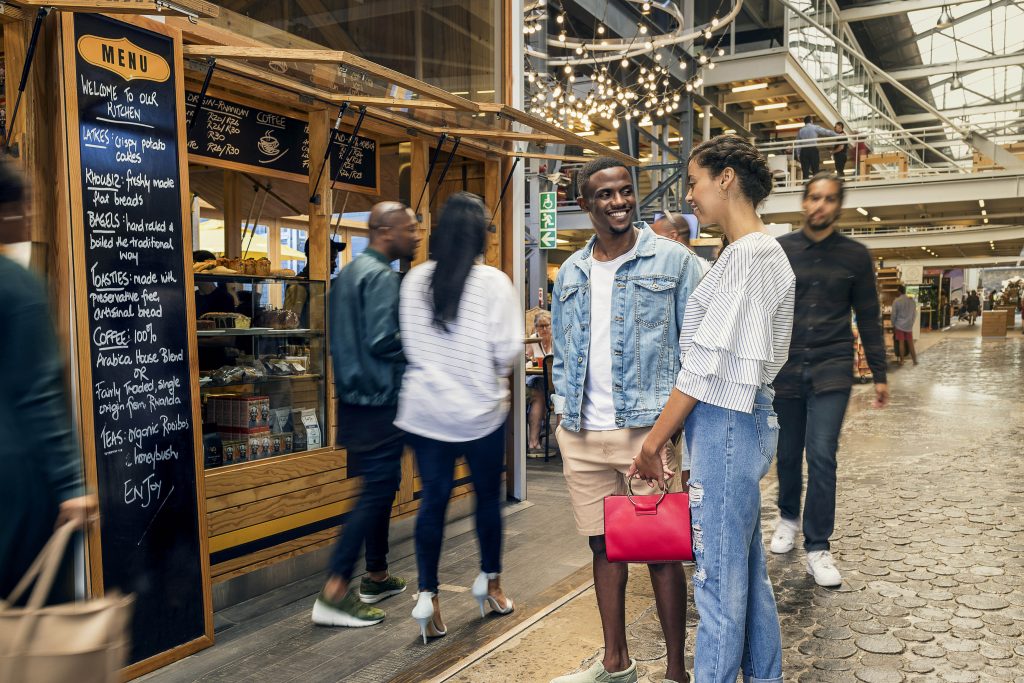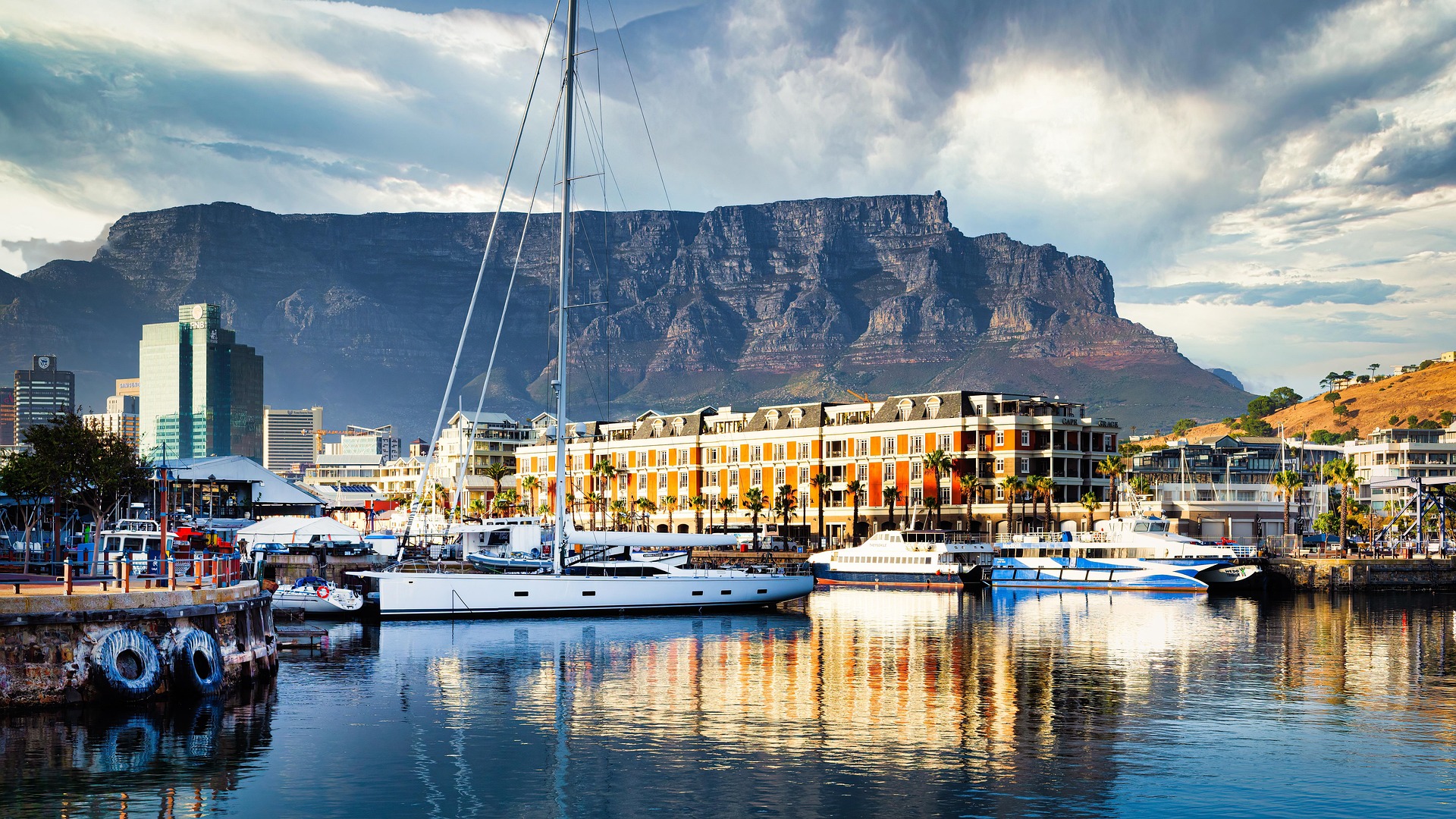
There’s a light in Cape Town that seems to be polished by seawater, one that glints off the Atlantic every evening as Table Mountain turns gold. On my first walk along the V&A Waterfront, I paused at the edge of the harbour, breathing in the salty breeze, watching soft waves ripple beneath yachts bobbing in the marina. It struck me: this place is where history, commerce, art, waves, and people all converge with effortless joy.
A Neighborhood of Heritage and Modern Life
Spread over 123 hectares in the heart of Cape Town’s harbour, the V&A Waterfront isn’t just a shopping centre or tourist hotspot — it’s a living, evolving neighborhood. It’s where old warehouses whisper stories of seafarers and merchants, where restoration meets innovation, and where heritage is not just preserved but woven into every corner. V&A Waterfront
From the creak of wooden docks to the modern glass façades of dining terraces, V&A Waterfront is infused with duality: of the ocean’s timeless rhythm and the city’s constant pulse. It embodies Cape Town’s capacity to embrace change without letting go of roots.
Things to Do: Explore, Savour, Live
1. Attractions with Views
-
Cape Wheel: For a sweeping vista over Granger Bay, Signal Hill, Table Mountain, Robben Island and the Stadium — one cannot ask for a more dramatic postcard. V&A Waterfront
-
Watershed: Streets filled with South African handicraft and design in reclaimed warehouse spaces; perfect for discovering local artists and taking home something meaningful. V&A Waterfront
-
Makers Landing & Mini Explorers: Spaces that invite curiosity — art installations, creative workshops, corners for children to roam. V&A Waterfront
2. Food, Drink & Indulgence
At the Waterfront, food is part theatre and part comfort. There are seafood restaurants with tables overlooking the water where the lights of the boats reflect like jewels at night; cafés tucked in between boutiques; casual spots where you can fish & chips next to the boats; bakeries filling the air with the scent of fresh bread; artisanal coffee that is more than just caffeine, it’s ritual.
Sunset dinner at one of the waterfront’s piers, the light fading over the sea, a glass of wine raised — these are moments you don’t plan meticulously, you simply receive.
3. Events, Culture & Markets
From live buskers on cobbled walkways to weekend markets where local fashion, food stalls, crafts converge — there’s a rhythm here that shifts with the calendar: outdoor concerts, art exhibits, festivals. You wander with no agenda, yet find yourself magnetically drawn to something speaking to your senses. V&A Waterfront
Dwelling & Lingering
I spent several nights in a hotel overlooking the harbour, curtains pulled back to reveal rippling water mirrored in the windows. By day, I watched dolphins slip through the wake of passing ships; by night, city lights danced across the water’s surface. There was something comforting in being so close to both nature and humanity.
Airbnb apartments, luxury hotels, or self-catering lofts — the Waterfront accommodates every kind of traveller. And the beauty is, you can rise in the morning, walk out your door, and be feeding seagulls, shopping, or sipping a latte by the sea within minutes.
Monuments, Memory & Reflection
Though V&A Waterfront is newer than many historical precincts, it pulses with memory. It bears the layers of Cape Town’s maritime past— from Dutch East India Company warehouses to shipyards. The juxtaposition of old and new isn’t just aesthetic; it tells of a city that has faced tides of change: colonialism, industry, apartheid, transformation—and has emerged multifaced and resilient.
One of my favourite reflective moments was at sunset by the Clock Tower, where port activity once buzzed with urgency. Today, it stands calm, orange and red against the sky, an anchor of memory in a fast-moving space.
Personal Reflection: What the Waterfront Taught Me
There was a twilight when the city’s lights merged with the stars above the ocean, when the chatter of tourists softened into a gentle lull, and I found myself thinking about belonging. The Waterfront shows one how many threads make up a city: commerce and art, joy and history, locals and visitors. You are part observer, part participant.
I realised that places like this are mirrors. They reflect who we are, where we come from. They afford small epiphanies: about connection, about pace, about what matters in a room full of light, laughter, and possibility.
If Kruger is wilderness and raw nature, the V&A Waterfront is the cultivated artifice of nature and city in conversation. Each has its own lessons. But here — by the docks, between the shops, courts, and cafés — you touch the grace of human curation: that perhaps beauty is not always found in the wild of the bush, but also in how we build futures by water’s edge.


